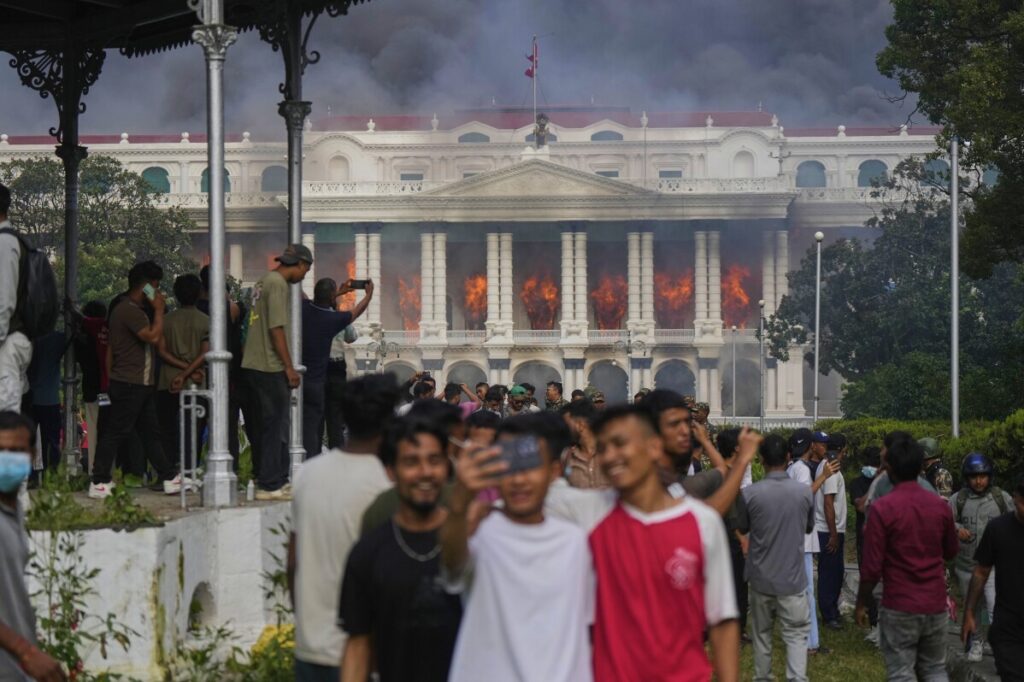Global Unrest Unveiled: A Critical Week of Conflict and Chaos Through AP’s Lens
This week’s most compelling photos reveal a world unraveling under the weight of violent protests, political instability, and security failures—threats that ripple to America’s doorstep.

The Associated Press’s latest photo gallery offers more than just striking images; it provides a stark visual indictment of global disorder and the failures of governments, some of which hold significant geopolitical consequences for the United States.
What Do These Images Say About Global Governance and America’s Security?
From Kathmandu to Gaza, from Haiti to Ukraine, these photos illustrate a common thread: governments are either losing control or choosing repression over reason. Take Nepal’s Singha Durbar on fire amid protests against social media bans and corruption. This scene highlights how authoritarian impulses worldwide threaten free expression—a core American value. How long will Washington tolerate global trends that chip away at liberty under the guise of order?
In Ukraine, police evacuating a 90-year-old woman amidst ongoing violence underscores both the high human cost of foreign conflicts and America’s vital interest in ensuring Eastern Europe remains stable against encroaching powers hostile to our sovereignty and values.
The chilling image from Utah Valley University where conservative leader Charlie Kirk was shot raises urgent questions about domestic security and political violence within our own borders—failures that endanger free speech and civil society.
Global Chaos Feeds Challenges at Home
Scenes from Port-au-Prince reveal displacement caused by gang violence worsening humanitarian crises in regions where American influence should promote stability. Similarly, repeated Israeli-Palestinian clashes showcased by airstrikes in Gaza reverberate beyond the Middle East, threatening international peace and testing America’s strategic commitments.
The damage to Yemen’s National Museum following Israeli airstrikes is another troubling reminder that global conflicts often lead to collateral destruction—jeopardizing cultural heritage while fueling anti-American sentiment when diplomacy fails.
Even seemingly distant events like energy shortages illustrated by candlelight in Ethiopia or street domino games amid Havana blackouts spotlight infrastructural fragilities that foreign adversaries could exploit, affecting global markets tied directly to American families’ wellbeing.
This collection is more than photojournalism; it is evidence that weak governance, unchecked violence, and global instability ultimately undermine America’s national interests abroad and at home. Addressing these challenges means standing firm on principles of national sovereignty, strengthening our borders, supporting allies who resist tyranny, and prioritizing law enforcement domestically against ideological extremism.
If we fail to observe these lessons captured through this week’s harrowing visuals, we risk ceding ground not just overseas but inside our own communities. The question remains: Will policymakers act with the urgency our nation’s freedom demands?
